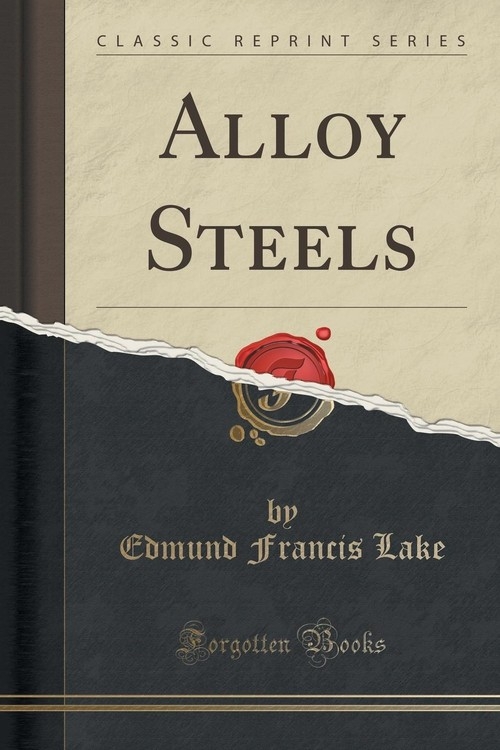Alloy Steels (Classic Reprint)
Lake Edmund Francis
Alloy Steels (Classic Reprint)
Lake Edmund Francis
- Wydawnictwo: FB &c Ltd
- EAN: 9781330005064
- Ilość stron: 58
- Format: 15.2x22.9cm
Niedostępna
Opis: Alloy Steels (Classic Reprint) - Lake Edmund Francis
Excerpt from Alloy Steels
Nickel steel is used to a large extent in the construction of high-grade machinery, and can be purchased in the open market in almost any percentages of nickel up to 35 percent, and with the carbon component varying between 0.10 and 1.00 percent. Nickel was added to carbon steel as the result of investigations which were started for the purpose of overcoming the "sudden rupture" that is inherent in all carbon steel. This property or tendency of carbon steel to rupture is the subject of numerous investigations by the railroads of the country at the present time, owing to the many accidents that have occurred in the past few years due to broken rails. Nickel added to steel largely overcomes this tendency, and nickel steel is used successfully for parts of machinery that have to withstand severe shocks and torsion, such as the crankshafts and connecting-rods of internal combustion engines, propeller shafts, automobile axles, and other parts of a similar nature which have to withstand similar strains and stresses.
If nickel is added to steel in any percentage not exceeding 8 percent, the tensile strength and the elastic limit of the steel will increase with the percentage of nickel. If the percentage of nickel is above 8 percent, but less than 15 percent, its effect on the steel becomes, for some reason, entirely neutralized and brittleness is produced. If the nickel percentage, however, is above 15 percent, then the strength and elasticity become practically equal to that of the nickel steels with percentages of nickel less than 8 percent. If the nickel percentage is increased above 20 percent, the strength and elastic limit gradually decrease, but the elongation increases.
The elongation shows a slight rise until about 3 per cent of nickel is added to the steel, and after that it shows a rapid decrease, until the zone of brittleness is reached, when it becomes nil. With from 20 to 25 per cent nickel, the elongation again rapidly rises, and from that point to 100 per cent it shows a slight increase. The best results, therefore, in steels that are used for machine parts are obtained with a nickel content of 3 1/2 per cent, although for some purposes 5 percent nickel steel is used at a sacrifice of the elongation.
Beneficial Effects of Nickel in Heat Treatment
The qualities of carbon steel are susceptible of change by heat treatment the same as are those of alloy steels, but the higher the carbon content is the more likely is the steel to burn and thereby reduce its strength, and it is extremely difficult to caseharden steels which contain more carbon than does mild steel without destroying their good qualities and strengths.
About the Publisher
Forgotten Books publishes hundreds of thousands of rare and classic books. Find more at www.forgottenbooks.com
This book is a reproduction of an important historical work. Forgotten Books uses state-of-the-art technology to digitally reconstruct the work, preserving the original format whilst repairing imperfections present in the aged copy. In rare cases, an imperfection in the original, such as a blemish or missing page, may be replicated in our edition. We do, however, repair the vast majority of imperfections successfully; any imperfections that remain are intentionally left to preserve the state of such historical works.
Szczegóły: Alloy Steels (Classic Reprint) - Lake Edmund Francis
Nazwa: Alloy Steels (Classic Reprint)
Autor: Lake Edmund Francis
Wydawnictwo: FB &c Ltd
Kod paskowy: 9781330005064
Języki: angielski
Ilość stron: 58
Format: 15.2x22.9cm





























